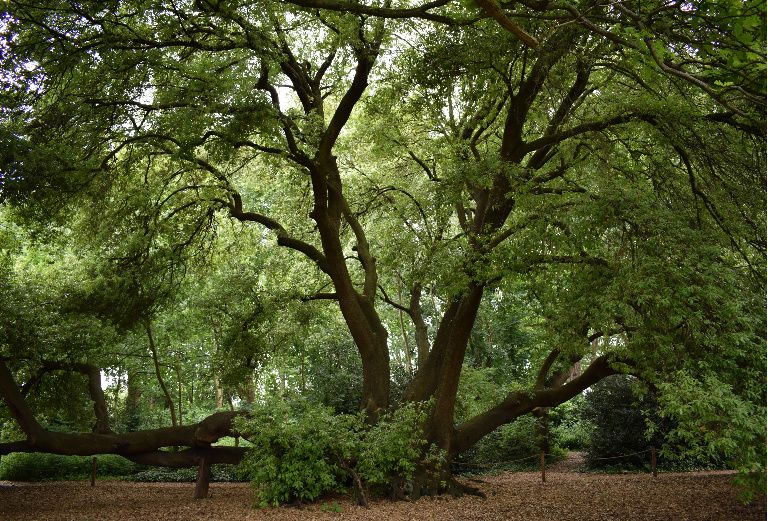
by Lucy Hart, head gardener
Our much loved ancient holm oak or holly leaved oak, Quercus ilex, has seen five centuries of the Bishop of London residing at Fulham Palace. Despite its hollow base, this tree stands strong and has witnessed many transformations of the gardens and Palace over time. The holm oak may have been planted by Bishop Grindal (1553 to 1559) or Bishop Aylmer (1576 to 1594) or even earlier. Grindal had a particular interest in plants, growing grapes for Queen Elizabeth I, and he introduced the tamarisk plant to England. Having put on over 100 years of growth the holm oak would have then been of great interest to Bishop Compton (1645 to 1713). Compton brought horticultural glory to Fulham Palace growing many different species, he was a plant collecting fanatic with a particularly interest in the ‘exotics’.
We believe this holm oak specimen is one of the earliest introductions of the species to Britain, originating from the Mediterranean. It could also be the oldest surviving specimen of Quercus ilexin England, if not United Kingdom. Having been coppiced at some point many years ago, its life expectancy has increased greatly and today we are left with a fascinating, multi-stemmed habit with huge twisting branches that are charismatically propped on supports. This very precious historic tree is located on the south east corner of the main lawn near the Tudor wall of the walled garden. What I would give to be able to talk to it, and ask what it has seen.